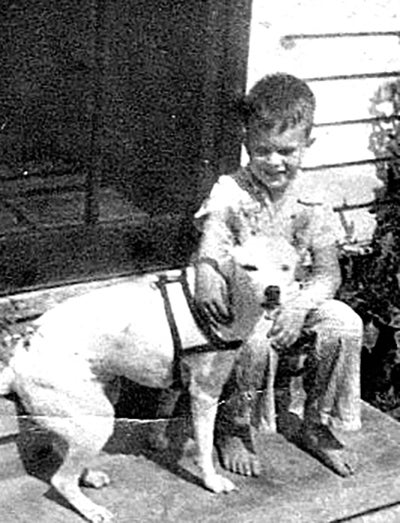And Now You Know: John Thomas Stark: Patriarch of the Starks of Orange
Published 12:11 am Saturday, July 3, 2021
|
Getting your Trinity Audio player ready...
|
It is always interesting to read a letter written by a soldier, even more so when the letter was written during the Civil War. John Thomas Stark, who would eventually relocate to Orange wrote a letter to his wife Martha during his service with the Confederate forces.
The letter was addressed to:
Mrs. Martha A. Stark, Burkeville, Newton County, Texas July 1 62
Dear Martha, Your kind letter by woods came to hand day before yesterday and found me well. We have had some sickness in our camp but none very serious. After using imaginary delay that men could be stopped by, we, I suppose will start tomorrow morning for Little Rock. General Hindman commands there and one of his aids passed through yesterday. He has come to hurry us up. He says the enemy are concentrating their forces near the Missouri line.
I was yesterday in Tyler and had an introduction to General McCulllogh, I like his appearance very much. He has a calm, quiet appearance, is polite and attenuative and keeps no one waiting who comes to see him on business—appears to have a very clear head and goes strait to the subject whatever it may be.
Direct all your letters to Little Rock till I write to you to change it even if we go to Missouri the letters will follow—tell Mrs. Triplett that I saw Kelly or rather Lt. Triplett yesterday. He came up from Shreveport to see Gen. McCullogh on business for Carter’s Brigade who are also under the Gen’l orders so we will be not far apart in the army.
Triplett looks healthier than I ever saw him.
I must close, my paper is out.
Lit. John T. Stark Company G 13th Texas Cavalry Little Rock Ark
John Thomas Stark was born December 19, 1821, in Pebble County, Ohio. He moved with his father to Missouri and lived there until 1840, they then moved to Texas and located near San Augustine.
By 1853 he had married Martha Ann Skidmore and moved his family to Burkeville in Newton County, Texas. With the exception of his time in service he was in the mercantile business there until 1865 when he moved to Newton and entered the mercantile business there until 1874. In November of that year, he moved to Orange. While in Newton he had read law and practiced as an attorney in addition to the mercantile business. In Orange, he practiced law and served as county judge from September 1876 to September 1877.
He had entered the Confederate army as a private soldier in Company H, 13th Regiment, Texas Cavalry, Walkers Division, at Burkeville in the winter of 1861. He was later elected Captain of his company. He served in several battles of the Trans-Mississippi Campaign, including battles at Mansfield and Pleasant Hill. In the winter of 1864, he became disabled due to illness and was discharged.
He married three times, the first to Martha Ann Skidmore, they had nine children before her death in September 1836. His next wife was Nancy Adams Snell Blewett, who gave him two children, she died in 1870. The third wife was Donna Jerushua Smith, she was the mother of seven children and died in 1924.
Stark was the father of 18 children, one of whom was William Henry Stark. The father of H.J. Lutcher Stark.
He was considered an early Texas pioneer of Newton County. He operated mercantile businesses and read and practiced law. While living in Burkeville he obtained an 80 mile mail route between Burkeville and Orange. His son William H. Stark rode the route for him. Prior to his enlisting in the Confederate army he owned a small business freighting goods from Nacogdoches.
Stark died at his home in Orange on September 24, 1893. His funeral was attended by a number of friends and a large number of Confederate veterans. His funeral was held at the Old First Orange Baptist Church, established in 1857. He had served as a Sunday School teacher and an Elder at the church.
The Camp Walter P. Lane of the United Confederate Veterans escorted his body from the church to Evergreen Cemetery. He was buried with the old Battle Flag of his Civil War Company.
“And now you know.”







